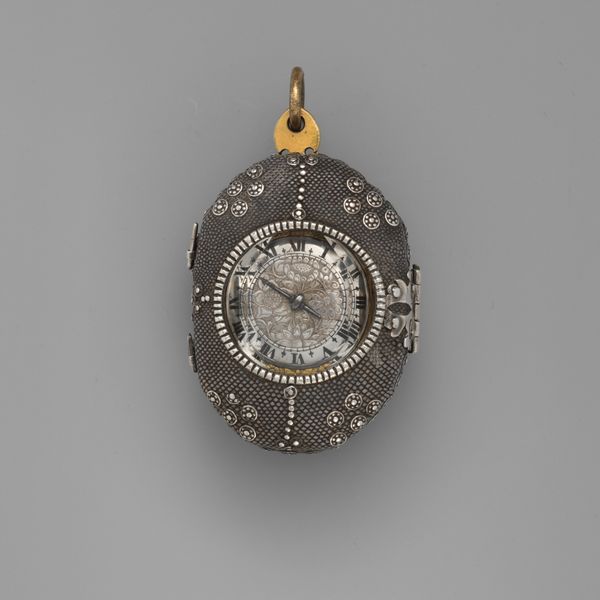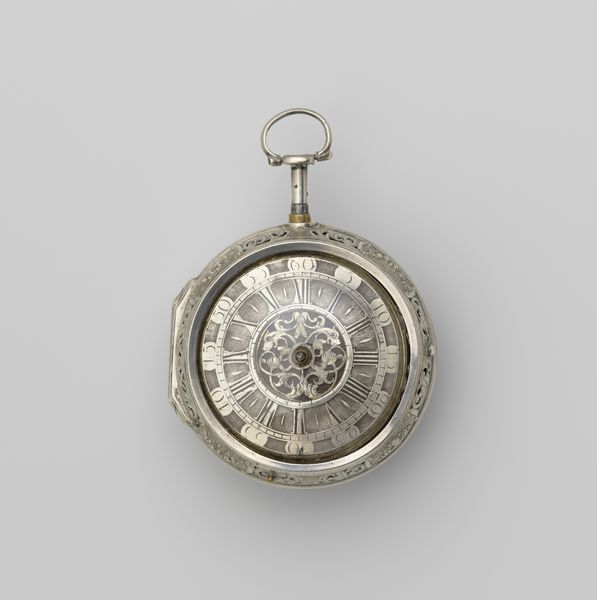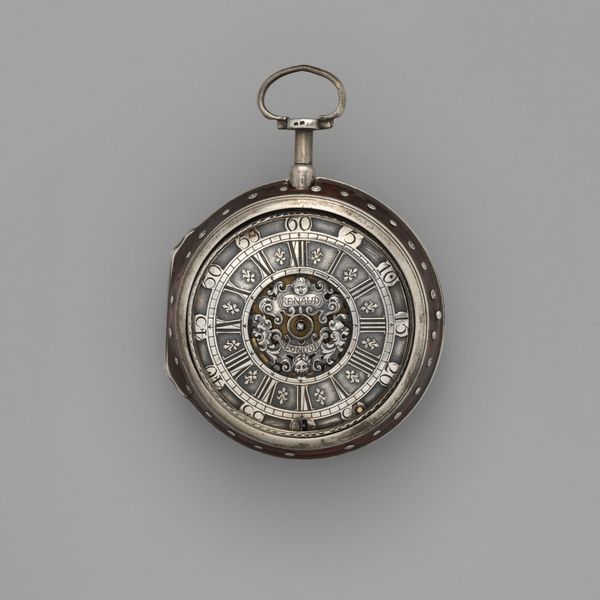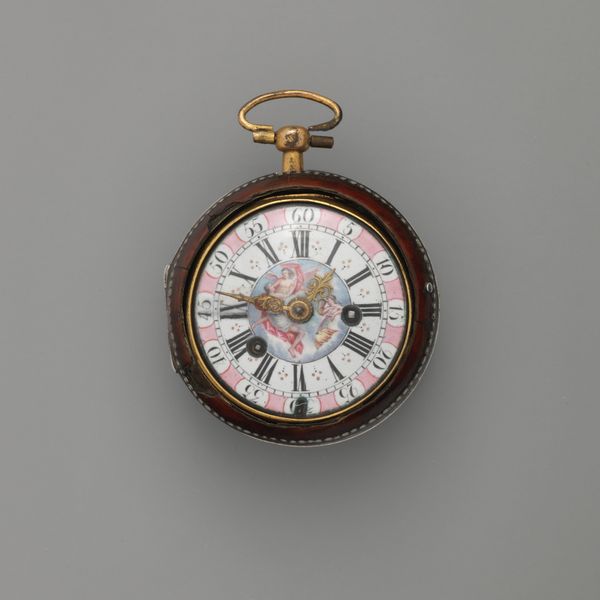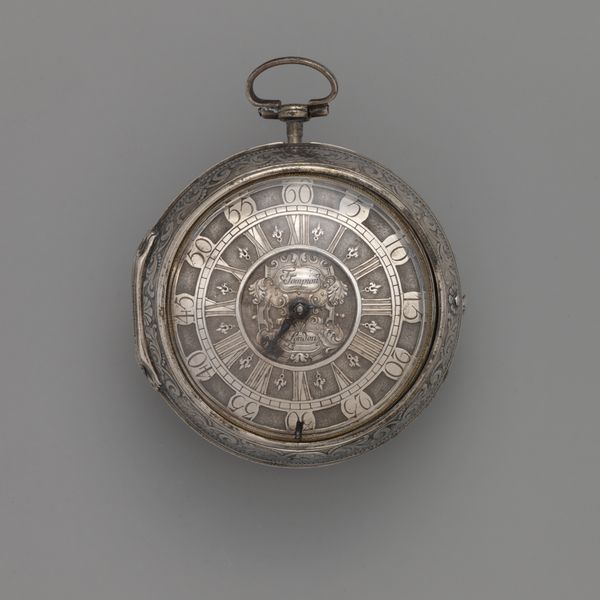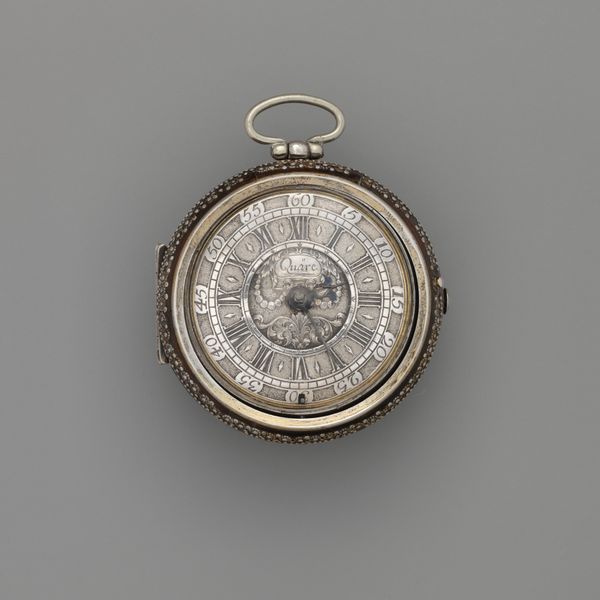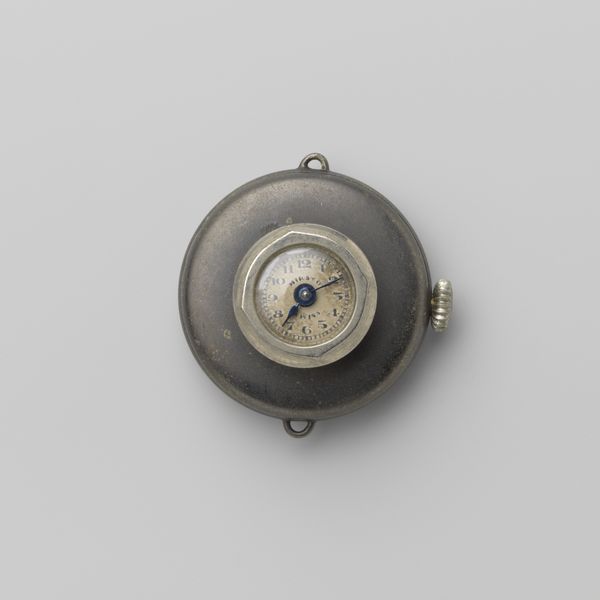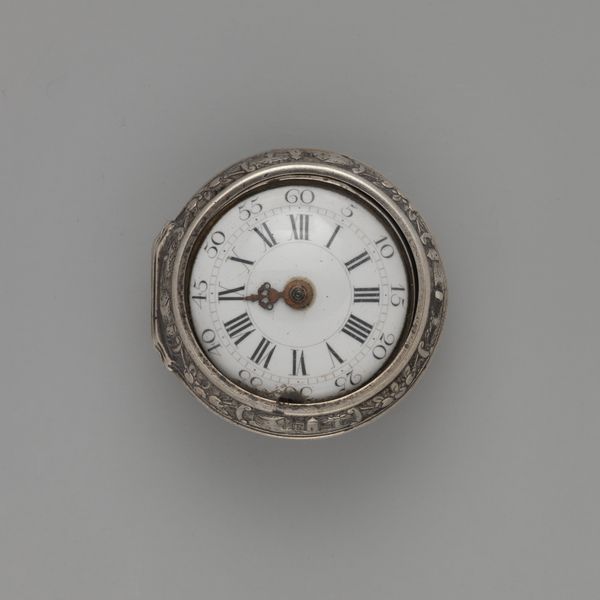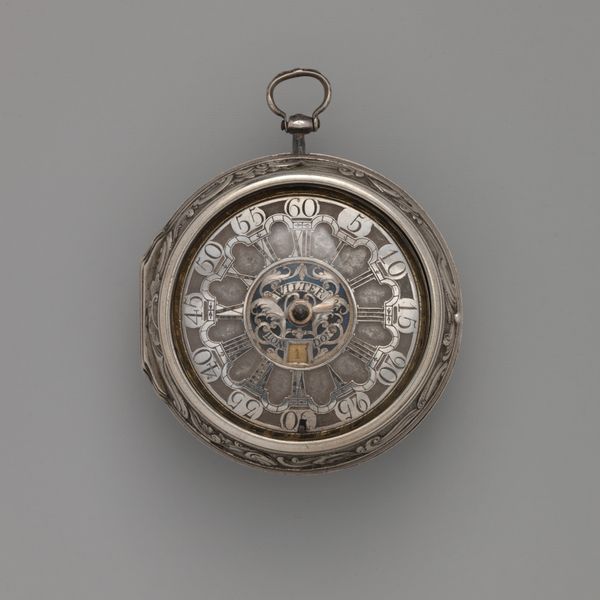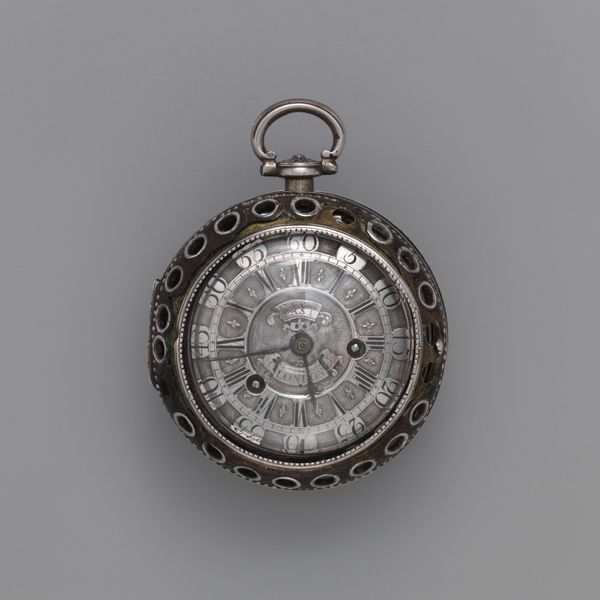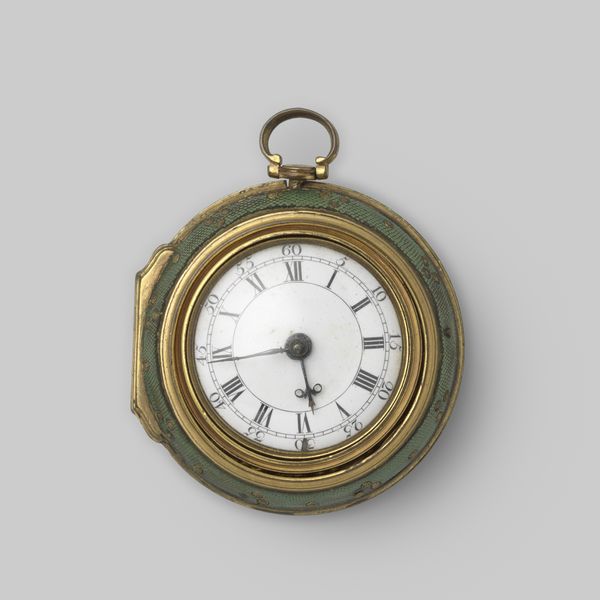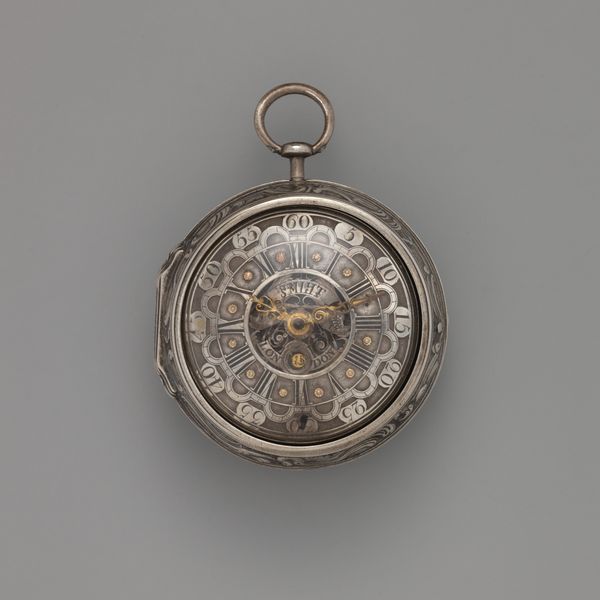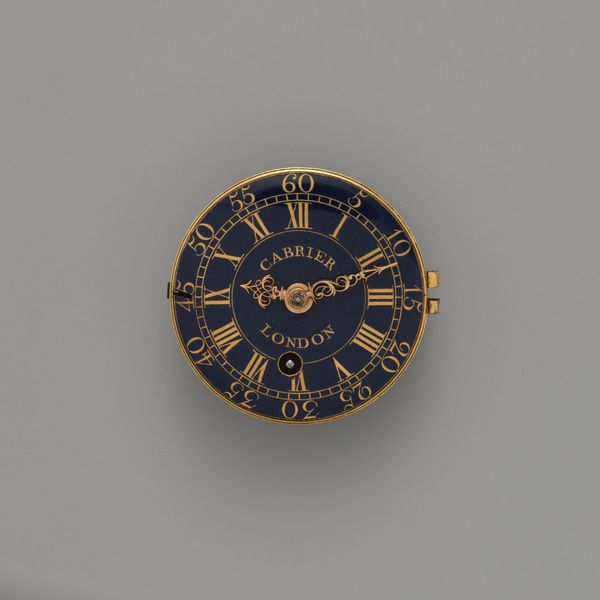
brass, metal
#
brass
#
metal
#
geometric
#
history-painting
Dimensions: height 7.5 cm, diameter 7.2 cm
Copyright: Rijks Museum: Open Domain
This astrolabe was made by Nikolaus Rugendas, probably in Germany, around the turn of the 18th century, using brass and silver. The instrument is intricately etched and engraved with numerals, star signs, and latitude scales. Notice the octagonal shape, which keeps the device compact and portable. Its original owner would have used it for navigation, timekeeping, and astrology. The production of this astrolabe reflects the era's blend of scientific advancement and artisanal skill. Brass was carefully cast and then meticulously engraved. The level of craftsmanship indicates the value placed on both knowledge and artistry, even in the practical sciences. Astrolabes like this one blur the lines between tool and artwork, requiring precision and skill in manufacture and reflecting the social status of its commissioner. By considering the history of making processes, we can appreciate how this astrolabe combines the technical, the aesthetic, and the social aspects of its time.
Comments
No comments
Be the first to comment and join the conversation on the ultimate creative platform.
